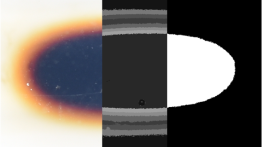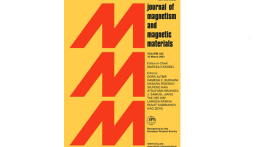Harry Wei ME’21 and Vincent Bianco ME’18 Publish Research in the Journal of Magnetism and Magnetic Materials
POSTED ON: December 30, 2020
Mechanical engineering student Haoran (Harry) Wei ME’21 and former graduate
student Vincent Bianco ME’18 published research on “Magnetic Drug Targeting
Experiments” in the Journal of Magnetism and Magnetic Materials (JMMM).
JMMM is one of the most highly cited journals in magnetism, covering a broad range of application areas and technologies. Harry and Vincent’s article "Quantifying Volume Loss of a Magnetically Localized Ferrofluid Bolus in Pulsatile Pipe Flow" presents a novel, robust, image-based method to quantify the efficacy of magnetically localized tumor therapies using an in-house designed in vitro pulsatile flow experiment built on a model blood vessel. The research came to fruition in Professor of Physics Philip Yecko's Complex Fluids lab.
Abstract:
We report on experiments in a model blood vessel of miscible ferrofluid regions held in place by permanent magnets of different strengths and subject to pulsatile flow at various Womersely numbers of O(10). Using image analysis, we quantify the dependence of ferrofluid volume loss, or “wash away,” rate due to hydrodynamic processes, identifying two distinct regimes. Complementary PIV allows visualization of the flow fields that correlate with volume loss, suggesting that volume loss may be a complex combination of vortex shedding during the primary pulse and re-combination during quiescent phase.
Link to the research article, to appear in Vol. 524 (April 15, 2021) can be found here.






